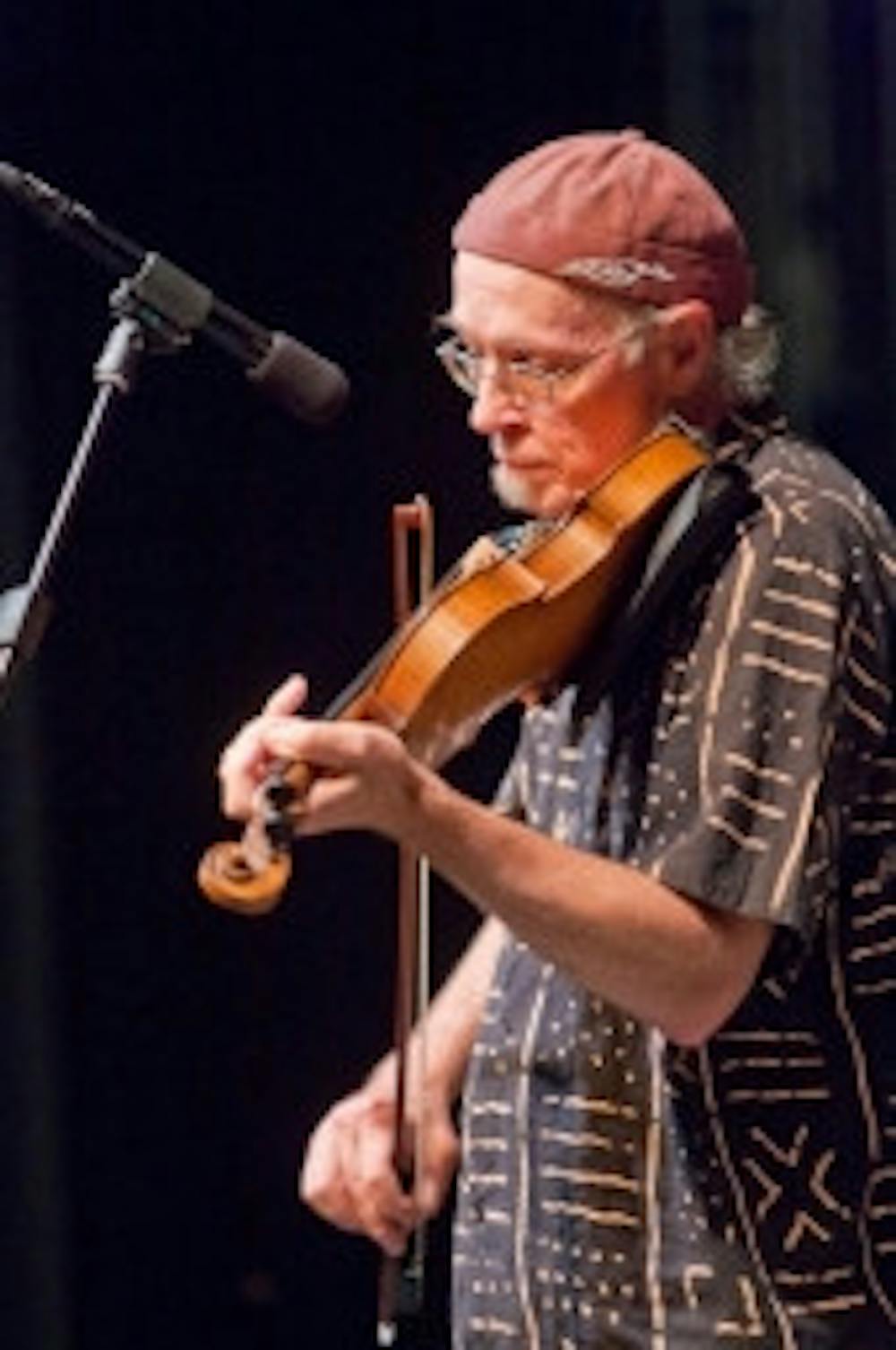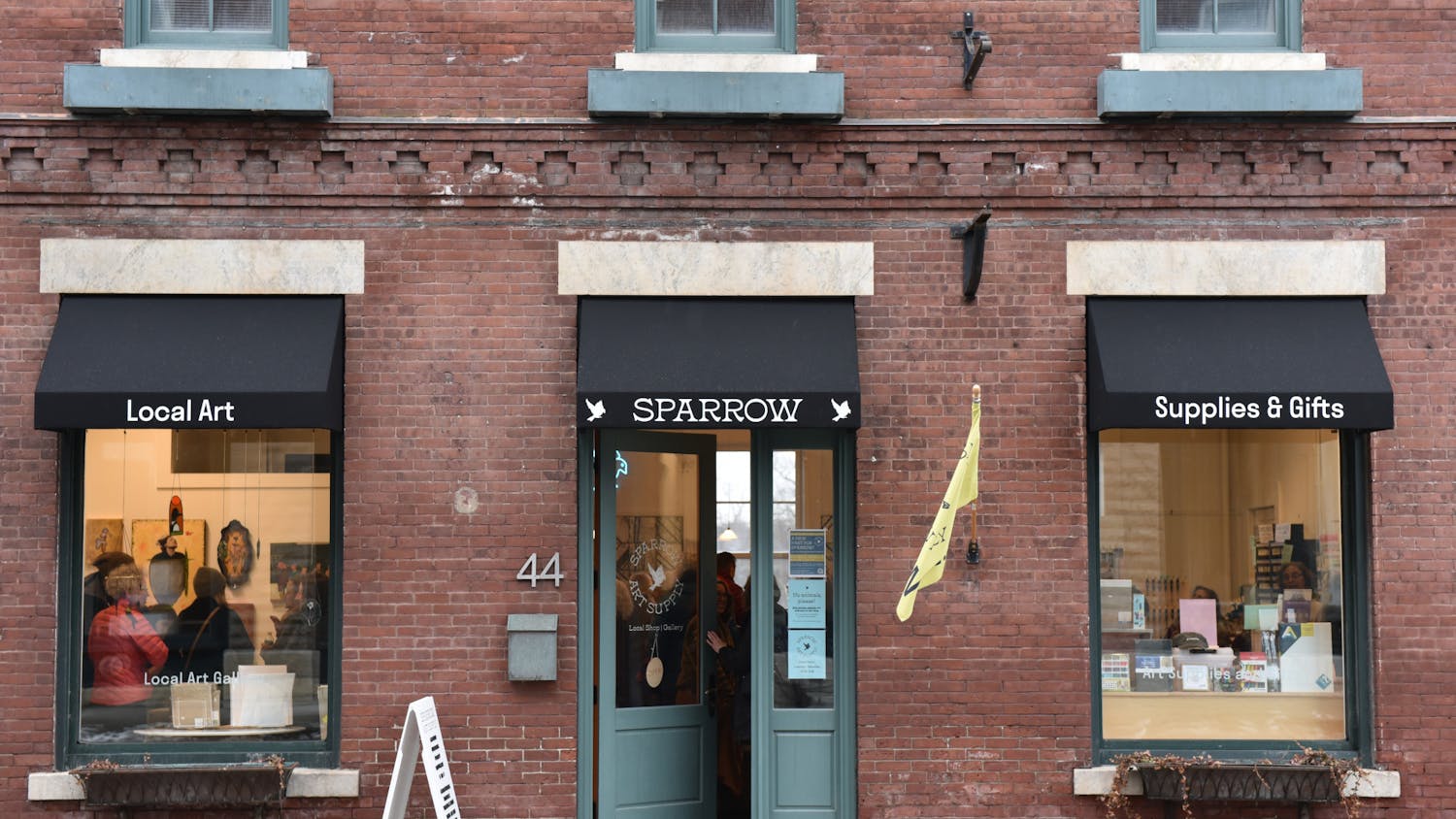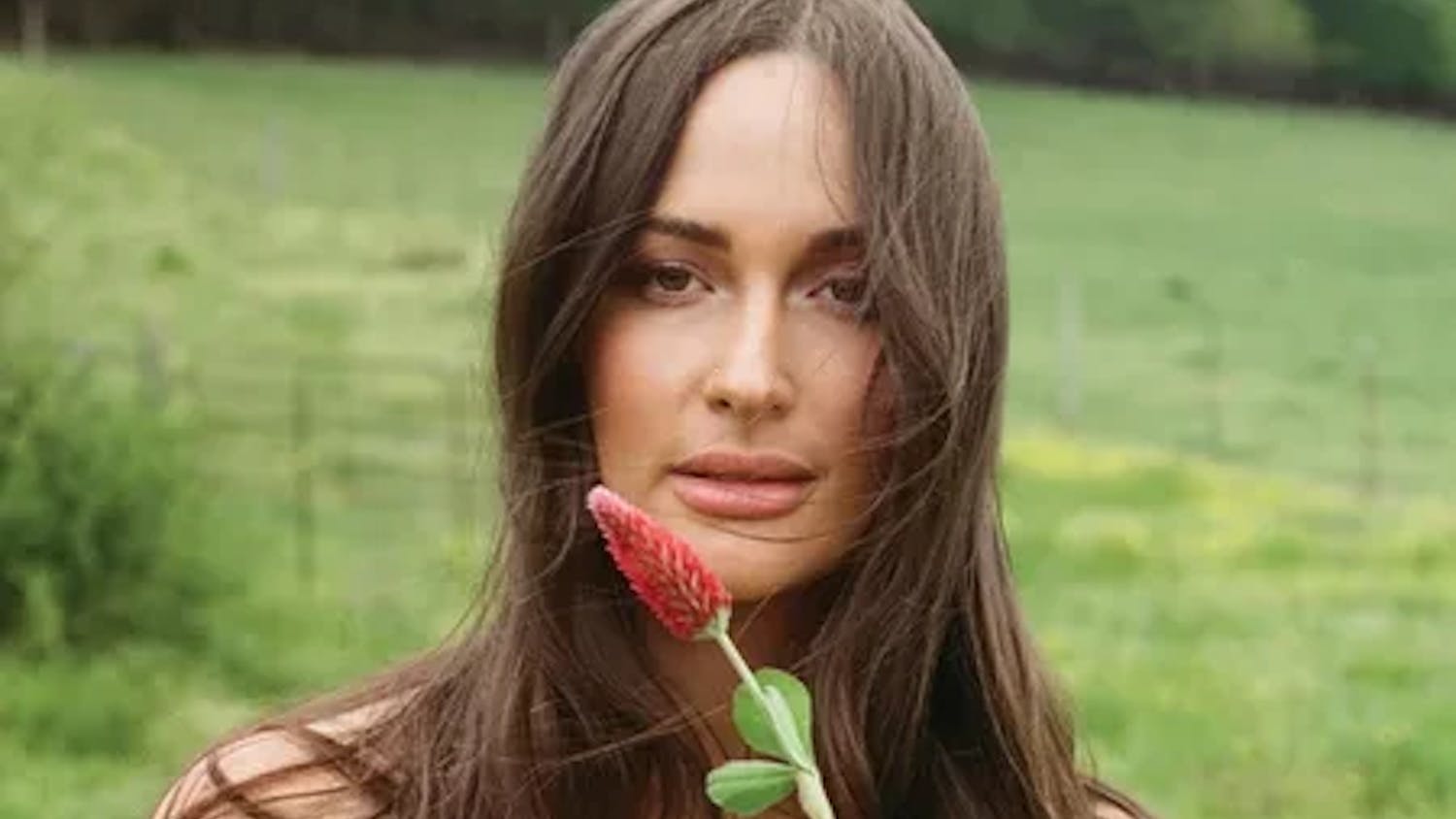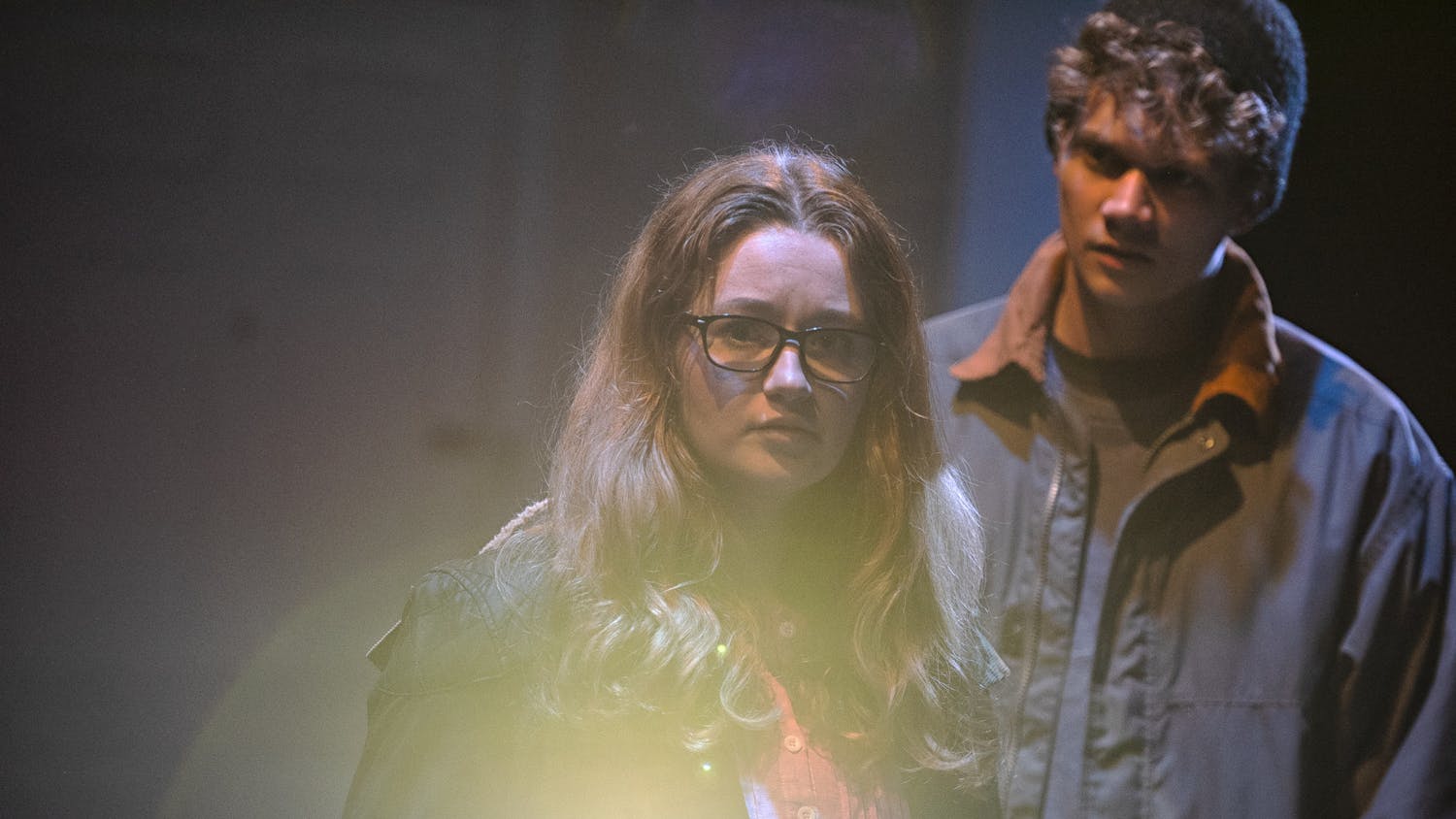For over a decade, the College has annually celebrated Irish music and dance in honor of St. Patrick’s Day. This year saw a continuation of this tradition with some notable changes. Affiliate Artists Timothy Cummings, Pete Sutherland and Dominique Dodge joined with alumnus Caleb Elder ’04 and an array of current students to lead this year’s proceedings.
Unlike in years past, the event was a hybrid of a conventional concert experience and an interactive traditional dance. To accommodate this new structure, the event was held in Wilson Hall, a move from the Kevin P. Mahaney ’84 Center for the Arts (MCA) Concert Hall, where it has been held in the past. Similar to last year’s event, which married Irish and Scottish music, this year’s event incorporated both Irish and Appalachian music, which share a cultural history and significant musical links.
Cummings offered some insight into these changes while speaking to the core spirit of the event, which has remained rooted in its origins.
“We’re definitely changing things, in large part because I am not an operatic tenor [as previous event organizer Francois Clemmons was], I’m an instrumentalist,” Cummings said. “It’s more tradition-focused and more dance-focused, but there’s still an element of inviting the audience to participate in some of the songs, which Francois had done as well.”
The desire to offer audiences the ability to participate in Irish and Appalachian dance seems to be borne of a desire to offer a more authentic and natural experience.
“It’s really weird to be playing highly rhythmic dance tunes on stage and to see people just sit politely and very still,” Cummings said.
This impulse was immediately apparent in the first half of the event, which was organized as a more conventional concert.
The performers were seated on stage, Cummings on various bagpipes, smallpipes and Border pipes, Dominique Dodge on harp, Pete Sutherland primarily on fiddle and banjo and Elder on fiddle and mandolin while the audience filled in the rows of seats.
Yet the rhythmic, infectious nature of Irish dance music seemed to fully engage the audience from the start. Patrons seated near the stage would tap a foot or bob a head here and there while a mother swayed with her child, at times falling into choreographed hand games. By the time the chairs were cleared and audience members were invited to dance, they relished the opportunity, and it became clear that this music demanded physical expression.
Before this moment of release came, the concert prelude featured myriad musical styles, instruments and artists. Performers moved seamlessly from sprightly dance tunes to heart-wrenching ballads, drawing out the subtle distinctions inherent in Irish and Appalachian cultural contexts while often uniting them in arrangement or in emphasizing particular musical features.
At times student performers were invited on stage, including Scott Collins ’15 on Scottish smallpipes, Laura Harris ’17 on accordion and Milo Stanley ’17.5 and Ellen Taylor ’15 on fiddle. One number was even accompanied by Appalachian clogging performed by local talent Kristin Bolton. In this way, the audience was exposed to a wide range of traditional music, drawn from different styles, different continents and different points in time. Yet a consistent feature of this music was its endearingly participatory quality.
Whether sunny or grim in mood, each piece was structured to allow an audience completely unfamiliar with the music to jump in at the next refrain of the chorus, or to simply bask in the intricately interwoven harmonies of the unique traditional instruments with the security of knowing the piece would soon return to a familiar key or phrase.
Cummings also noted this particular feature of the Irish and Appalachian music that he chose to feature.
“It’s very casual and free-spirited – nothing formal about it,” he said. “It’s the music and the dance of the people in that way – it’s not necessarily ‘high art.’ It’s designed not to be virtuosic, but instead to include everybody.”
When the chairs were finally cleared away and Mary Wesley assumed the stage as dance caller, the casual and free-spirited nature of Irish and Appalachian music was fully realized. Large numbers of students, families, children and older couples took to the dance floor, eagerly embracing the music in a way that suggests – despite its antiquated, unfamiliar flavor – that it continues to resonate and engage modern audiences. That afternoon succeeded in using the peripheral niche of traditional music as an avenue for audience members to celebrate and participate in an engaging communal musical experience.
In this way, Cummings seems to have accomplished his goal.
“I hoped to give people an opportunity to hear live music and to move their bodies, to experience the ‘rapture of being,’” he said. “Tied to all of that, of course, is to involve students in that experience and pass along the torch of tradition.”
Cummings Charms with Irish Traditions

Comments



